-
 Bitcoin
Bitcoin $108,043.3894
-1.71% -
 Ethereum
Ethereum $2,519.1878
-3.09% -
 Tether USDt
Tether USDt $1.0004
-0.01% -
 XRP
XRP $2.2231
-2.72% -
 BNB
BNB $655.3607
-1.06% -
 Solana
Solana $148.3620
-2.84% -
 USDC
USDC $1.0000
0.00% -
 TRON
TRON $0.2838
-0.37% -
 Dogecoin
Dogecoin $0.1648
-4.79% -
 Cardano
Cardano $0.5759
-3.97% -
 Hyperliquid
Hyperliquid $38.4598
-5.19% -
 Sui
Sui $2.9005
-4.22% -
 Bitcoin Cash
Bitcoin Cash $481.1531
-3.80% -
 Chainlink
Chainlink $13.1936
-4.50% -
 UNUS SED LEO
UNUS SED LEO $9.0471
0.41% -
 Avalanche
Avalanche $17.9444
-4.20% -
 Stellar
Stellar $0.2378
-2.60% -
 Toncoin
Toncoin $2.7850
-3.38% -
 Shiba Inu
Shiba Inu $0.0...01148
-3.75% -
 Litecoin
Litecoin $87.3159
-3.73% -
 Hedera
Hedera $0.1557
-3.02% -
 Monero
Monero $314.0980
-1.98% -
 Polkadot
Polkadot $3.3909
-5.10% -
 Dai
Dai $1.0001
0.00% -
 Ethena USDe
Ethena USDe $1.0002
-0.02% -
 Bitget Token
Bitget Token $4.4147
-3.74% -
 Uniswap
Uniswap $6.9933
-9.59% -
 Pepe
Pepe $0.0...09661
-6.72% -
 Aave
Aave $264.1417
-6.16% -
 Pi
Pi $0.4705
-5.23%
What is the appropriate slippage setting on PancakeSwap?
Set slippage on PancakeSwap: 0.1-0.5% for stablecoins, 1-3% for volatile tokens, and 5-10% for new or low liquidity pairs to ensure smooth trades.
Apr 09, 2025 at 01:00 am
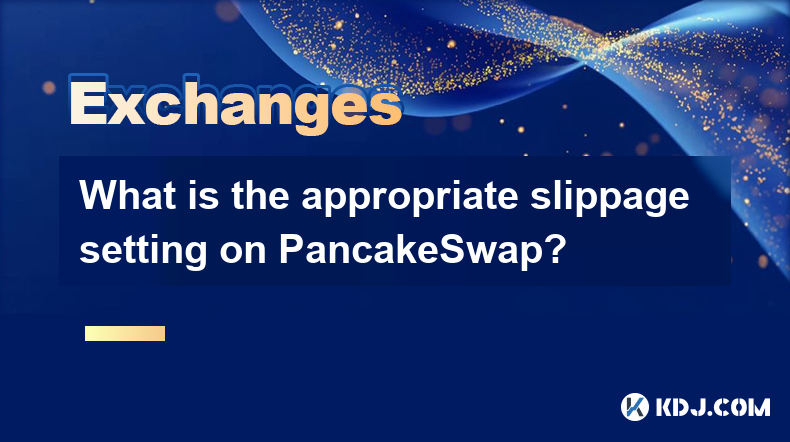
What is the appropriate slippage setting on PancakeSwap?
When trading on decentralized exchanges like PancakeSwap, one of the critical settings you need to understand and adjust is the slippage tolerance. Slippage refers to the difference between the expected price of a trade and the price at which the trade is actually executed. Setting the appropriate slippage tolerance is crucial for ensuring your trades are executed smoothly and at the best possible rates. In this article, we will delve into what slippage is, how it affects your trades on PancakeSwap, and how to set the appropriate slippage tolerance for different types of transactions.
Understanding Slippage on PancakeSwap
Slippage occurs due to the volatility and liquidity of the market. When you place an order, the price of the token can change between the time you submit your transaction and when it is confirmed on the blockchain. If the price moves unfavorably, you might end up buying or selling at a worse rate than you expected. On PancakeSwap, slippage tolerance is a setting that allows you to specify how much price movement you are willing to accept before your transaction is canceled.
Factors Affecting Slippage
Several factors can influence the amount of slippage you experience on PancakeSwap:
- Liquidity: The more liquidity a token pair has, the less slippage you are likely to encounter. High liquidity means there are more tokens available for trading, which can help stabilize prices.
- Volatility: Highly volatile tokens are more prone to significant price changes, which can lead to higher slippage.
- Transaction Size: Larger transactions can cause more slippage because they require more liquidity to be filled.
- Network Congestion: During times of high network activity, transactions may take longer to confirm, increasing the chance of slippage.
Setting Slippage Tolerance on PancakeSwap
To set the slippage tolerance on PancakeSwap, follow these steps:
- Open PancakeSwap: Navigate to the PancakeSwap website and connect your wallet.
- Access Settings: Click on the settings icon (usually represented by a gear or cog) in the top right corner of the interface.
- Adjust Slippage Tolerance: You will see a field labeled "Slippage Tolerance." Here, you can enter a percentage value that represents the maximum slippage you are willing to accept.
Recommended Slippage Settings for Different Scenarios
The appropriate slippage setting can vary depending on the specific transaction you are making. Here are some general guidelines:
- For Stablecoins and High Liquidity Pairs: A slippage tolerance of 0.1% to 0.5% is usually sufficient. These pairs have high liquidity and low volatility, so you can keep the slippage tolerance low.
- For Low Liquidity or Volatile Tokens: You may need to set a higher slippage tolerance, such as 1% to 3%. This helps ensure your transaction goes through even if the price moves significantly.
- For New Token Launches or Very Low Liquidity Pairs: You might need to set an even higher slippage tolerance, such as 5% to 10%. This is because new tokens often have very low liquidity, and prices can be highly volatile.
Adjusting Slippage for Specific Transactions
When you are about to make a trade, you can adjust the slippage tolerance based on the current market conditions and the specific token pair you are trading. Here’s how to do it:
- Check the Current Liquidity: Before setting your slippage tolerance, check the liquidity of the token pair you are trading. You can do this by looking at the liquidity pool on PancakeSwap or using a tool like CoinGecko or CoinMarketCap.
- Monitor Market Volatility: Keep an eye on the price movements of the tokens you are trading. If the market is particularly volatile, you may need to increase your slippage tolerance.
- Test with Small Transactions: If you are unsure about the appropriate slippage setting, start with a small transaction to test the waters. This can help you gauge the right slippage tolerance for larger trades.
Common Mistakes to Avoid
When setting your slippage tolerance on PancakeSwap, there are a few common mistakes you should avoid:
- Setting Slippage Too Low: If you set your slippage tolerance too low, your transaction may fail to execute, especially in volatile markets or with low liquidity pairs.
- Setting Slippage Too High: While setting a high slippage tolerance can increase the chances of your transaction going through, it also means you might end up with a worse price than expected.
- Not Adjusting for Different Tokens: Different token pairs have different liquidity and volatility levels. Make sure to adjust your slippage tolerance accordingly for each trade.
Frequently Asked Questions
Q: Can I set a different slippage tolerance for buying and selling on PancakeSwap?
A: No, the slippage tolerance setting on PancakeSwap applies to both buying and selling transactions. You will need to adjust the setting each time you make a trade if you want to use different slippage tolerances.
Q: How does gas fees affect slippage on PancakeSwap?
A: Gas fees do not directly affect slippage, but they can impact the speed at which your transaction is processed. Higher gas fees can lead to faster transaction confirmation, potentially reducing the chance of slippage due to price changes during the confirmation period.
Q: Is there a way to automate slippage settings on PancakeSwap?
A: Currently, PancakeSwap does not offer an automated way to adjust slippage settings. You will need to manually adjust the slippage tolerance for each trade based on the specific conditions of the market and the token pair you are trading.
Q: Can I use a third-party tool to help set slippage on PancakeSwap?
A: Yes, there are third-party tools and browser extensions available that can help you monitor market conditions and suggest appropriate slippage settings. However, always ensure you are using reputable tools to avoid potential security risks.
Disclaimer:info@kdj.com
The information provided is not trading advice. kdj.com does not assume any responsibility for any investments made based on the information provided in this article. Cryptocurrencies are highly volatile and it is highly recommended that you invest with caution after thorough research!
If you believe that the content used on this website infringes your copyright, please contact us immediately (info@kdj.com) and we will delete it promptly.
- Bitcoin's Pattern Break: Are HODLers the Key to the Next Surge?
- 2025-07-04 18:50:12
- Bitcoin Price, Trump's Bill, and the $150K Dream: A NYC Take
- 2025-07-04 19:50:12
- Ethereum, LILPEPE, and the July Bounce: Will Pepe Steal ETH's Thunder?
- 2025-07-04 19:10:12
- Binance Institutional Loans: Unlocking 4x Leverage and Zero Interest for Whales
- 2025-07-04 19:15:12
- Bitcoin Bull Run: Analysts Eye Peak in Late 2025?
- 2025-07-04 19:20:13
- Pepe Indicators, Bullish Forecast: Can the Meme Coin Rally?
- 2025-07-04 19:25:12
Related knowledge
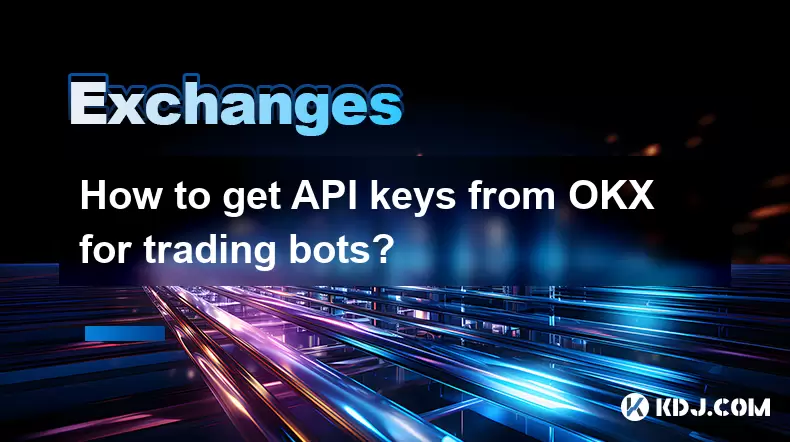
How to get API keys from OKX for trading bots?
Jul 03,2025 at 07:07am
Understanding API Keys on OKXTo interact with the OKX exchange programmatically, especially for building or running trading bots, you need to obtain an API key. An API (Application Programming Interface) key acts as a secure token that allows your bot to communicate with the exchange's servers. On OKX, these keys come with customizable permissions such ...
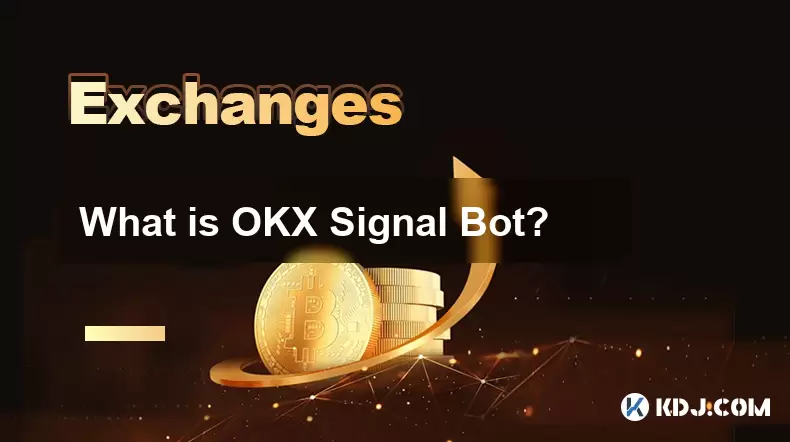
What is OKX Signal Bot?
Jul 02,2025 at 11:01pm
Understanding the Basics of OKX Signal BotThe OKX Signal Bot is a feature within the OKX ecosystem that provides users with automated trading signals and execution capabilities. Designed for both novice and experienced traders, this bot helps identify potential trading opportunities by analyzing market trends, technical indicators, and historical data. ...
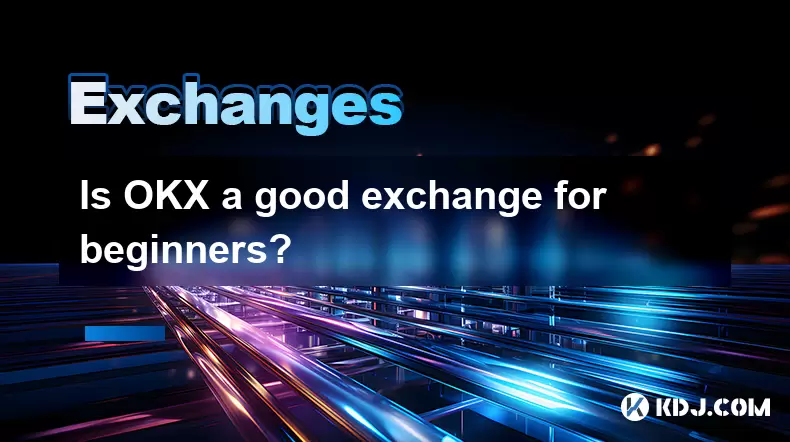
Is OKX a good exchange for beginners?
Jul 03,2025 at 05:00pm
What Is OKX and Why Is It Popular?OKX is one of the leading cryptocurrency exchanges globally, known for its robust trading infrastructure and a wide variety of digital assets available for trading. It supports over 300 cryptocurrencies, including major ones like Bitcoin (BTC), Ethereum (ETH), and Solana (SOL). The platform has gained popularity not onl...
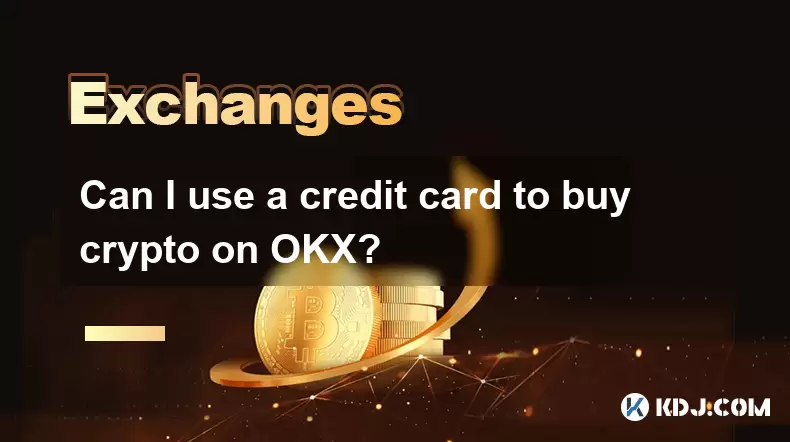
Can I use a credit card to buy crypto on OKX?
Jul 04,2025 at 04:28am
Understanding OKX and Credit Card PaymentsOKX is one of the leading cryptocurrency exchanges globally, offering a wide range of services including spot trading, derivatives, staking, and more. Users often wonder whether they can use a credit card to buy crypto on OKX, especially if they are new to the platform or looking for quick ways to enter the mark...
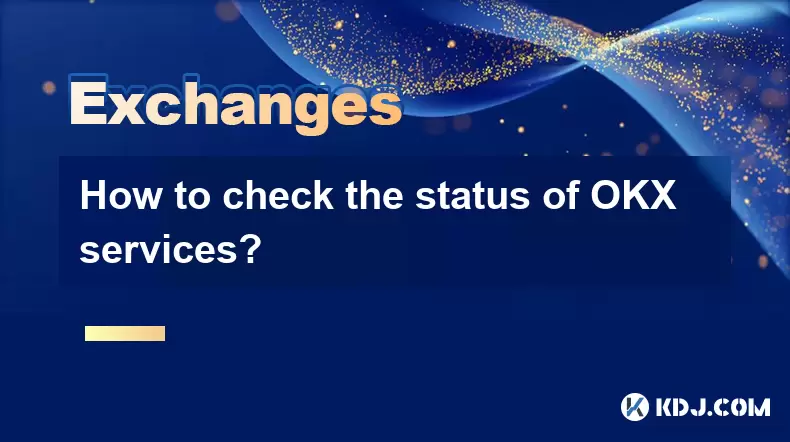
How to check the status of OKX services?
Jul 02,2025 at 11:14pm
What is OKX, and Why Checking Service Status Matters?OKX is one of the world’s leading cryptocurrency exchanges, offering services such as spot trading, futures trading, staking, and more. With millions of users relying on its platform for daily transactions, it's crucial to know how to check the status of OKX services. Downtime or maintenance can affec...
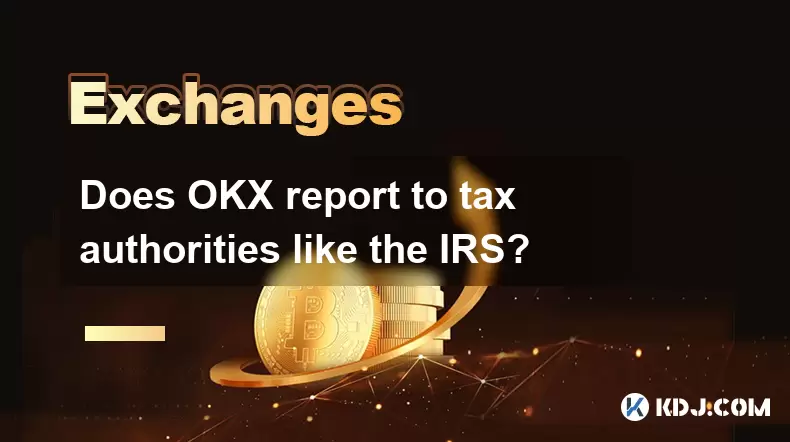
Does OKX report to tax authorities like the IRS?
Jul 03,2025 at 03:14pm
Understanding the Role of Cryptocurrency Exchanges in Tax ReportingCryptocurrency exchanges play a crucial role in facilitating digital asset transactions, but their responsibilities extend beyond trading and custody. As regulatory scrutiny intensifies globally, users are increasingly concerned about whether platforms like OKX report to tax authorities ...

How to get API keys from OKX for trading bots?
Jul 03,2025 at 07:07am
Understanding API Keys on OKXTo interact with the OKX exchange programmatically, especially for building or running trading bots, you need to obtain an API key. An API (Application Programming Interface) key acts as a secure token that allows your bot to communicate with the exchange's servers. On OKX, these keys come with customizable permissions such ...

What is OKX Signal Bot?
Jul 02,2025 at 11:01pm
Understanding the Basics of OKX Signal BotThe OKX Signal Bot is a feature within the OKX ecosystem that provides users with automated trading signals and execution capabilities. Designed for both novice and experienced traders, this bot helps identify potential trading opportunities by analyzing market trends, technical indicators, and historical data. ...

Is OKX a good exchange for beginners?
Jul 03,2025 at 05:00pm
What Is OKX and Why Is It Popular?OKX is one of the leading cryptocurrency exchanges globally, known for its robust trading infrastructure and a wide variety of digital assets available for trading. It supports over 300 cryptocurrencies, including major ones like Bitcoin (BTC), Ethereum (ETH), and Solana (SOL). The platform has gained popularity not onl...

Can I use a credit card to buy crypto on OKX?
Jul 04,2025 at 04:28am
Understanding OKX and Credit Card PaymentsOKX is one of the leading cryptocurrency exchanges globally, offering a wide range of services including spot trading, derivatives, staking, and more. Users often wonder whether they can use a credit card to buy crypto on OKX, especially if they are new to the platform or looking for quick ways to enter the mark...

How to check the status of OKX services?
Jul 02,2025 at 11:14pm
What is OKX, and Why Checking Service Status Matters?OKX is one of the world’s leading cryptocurrency exchanges, offering services such as spot trading, futures trading, staking, and more. With millions of users relying on its platform for daily transactions, it's crucial to know how to check the status of OKX services. Downtime or maintenance can affec...

Does OKX report to tax authorities like the IRS?
Jul 03,2025 at 03:14pm
Understanding the Role of Cryptocurrency Exchanges in Tax ReportingCryptocurrency exchanges play a crucial role in facilitating digital asset transactions, but their responsibilities extend beyond trading and custody. As regulatory scrutiny intensifies globally, users are increasingly concerned about whether platforms like OKX report to tax authorities ...
See all articles

























































































